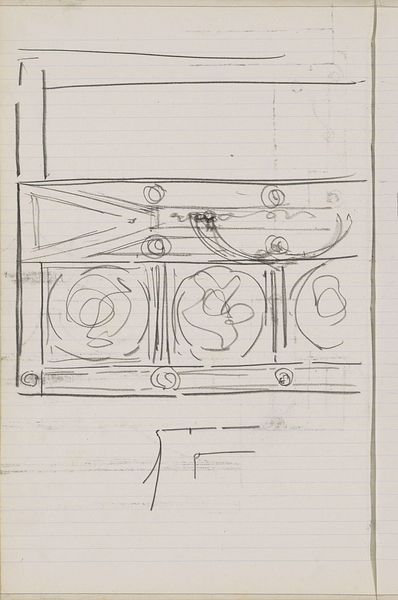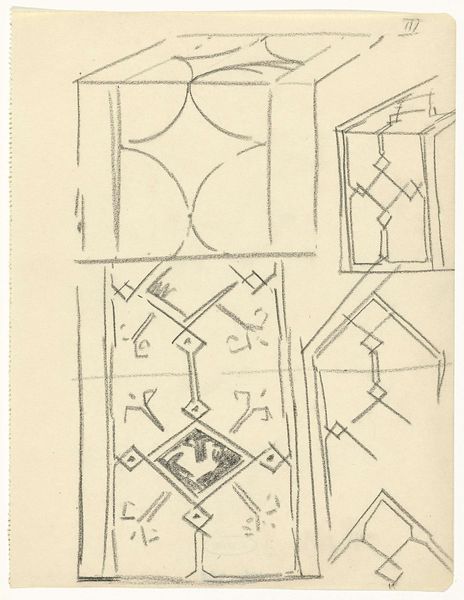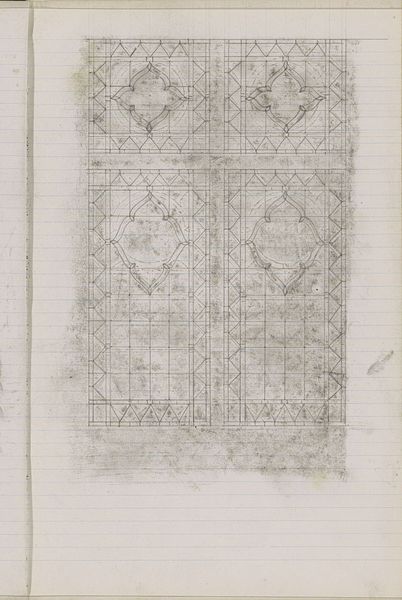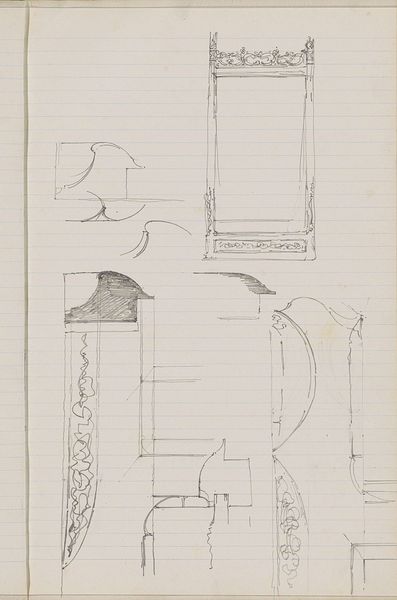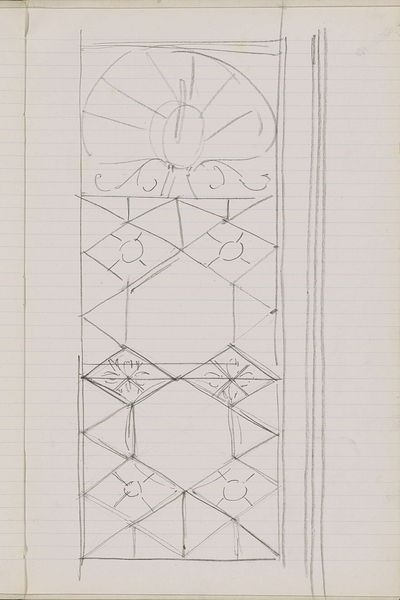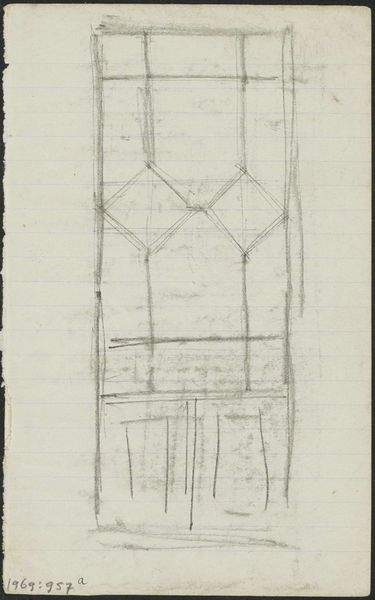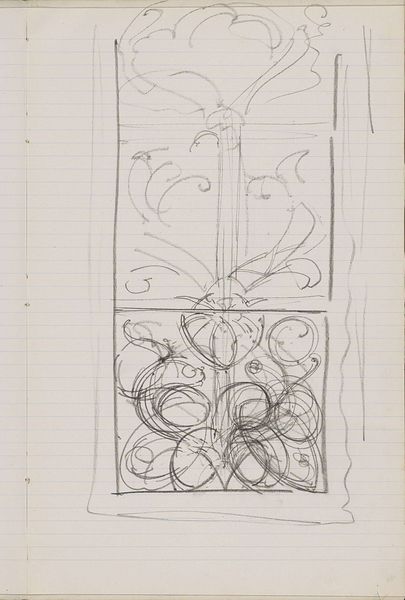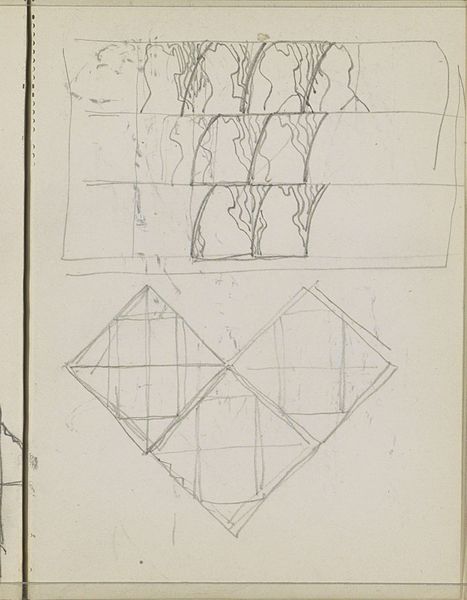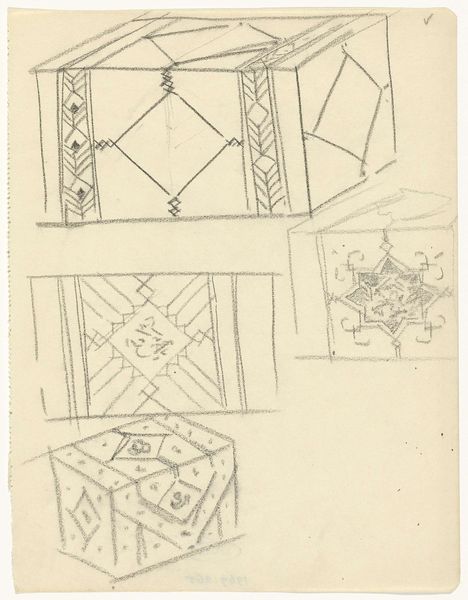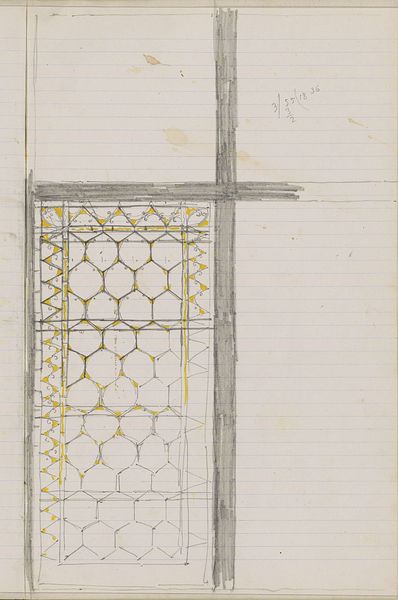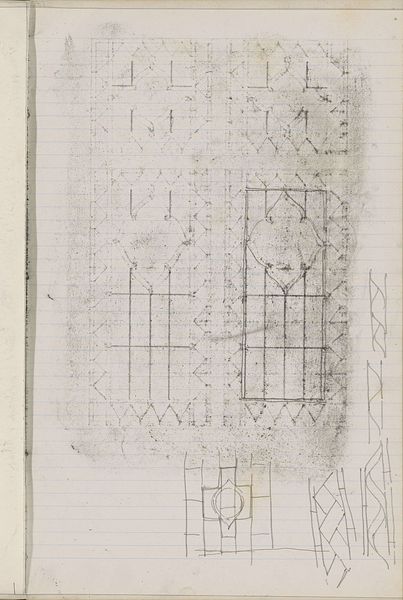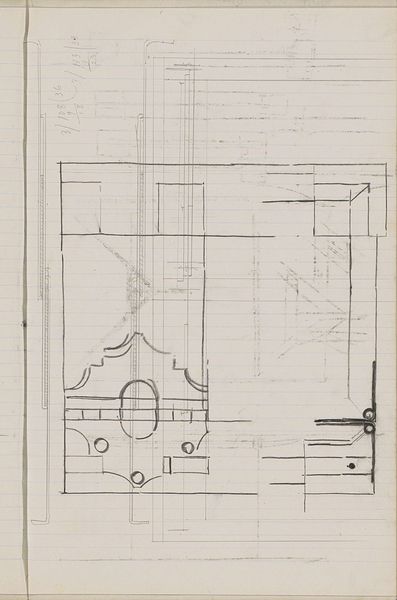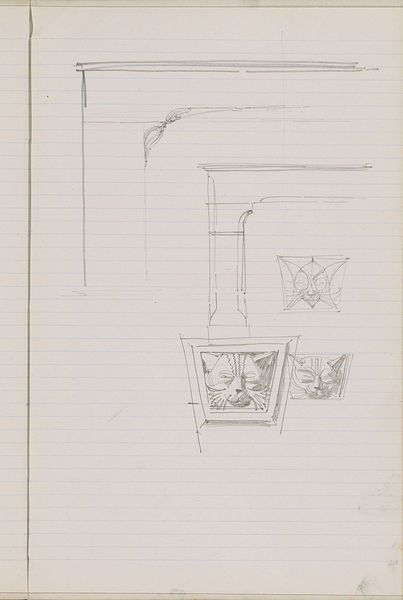
drawing, paper, graphite
#
drawing
#
art-nouveau
#
pen sketch
#
paper
#
geometric
#
line
#
graphite
Dimensions: height 166 mm, width 105 mm
Copyright: Rijks Museum: Open Domain
Editor: Here we have Gerrit Willem Dijsselhof's "Design for a Stained Glass Window," likely created between 1876 and 1924, and rendered in graphite and pen on paper. It feels unfinished, almost like a quick idea jotted down. What strikes you most about this work? Curator: The visible lines of the notebook paper remind us of the drawing’s initial conception. We can almost feel the artist’s hand as he experimented. This begs the question: what were the economic conditions and the existing social infrastructures that enabled such artistic explorations during the Art Nouveau movement? Editor: So you’re interested in how the design itself reflects broader economic trends? Curator: Precisely. Art Nouveau often drew inspiration from nature, but here, we see geometric forms taking precedence. How did the availability of new materials, production methods, or labor practices affect Dijsselhof’s artistic choices, leading him toward geometric forms instead of purely organic ones? Editor: That's a great point. I was focusing on the lack of detail as a potential artistic choice related to line art, but you’re pushing me to consider how practical considerations surrounding the making of stained glass itself—the cost of materials or the skill of the craftsmen he might have been working with—could have shaped the design's simplicity. Curator: Exactly. Also, let’s consider the consumption of such stained-glass windows. Who commissioned these works, and what did they symbolize within the specific social circles that could afford them? The glass is inherently fragile. How did production pressures during that time affect the inherent permanence we associate with the fine arts? Editor: I never considered the buyer! I always assume stained glass goes into cathedrals, but not always! Curator: Not necessarily! This brings us back to materiality and class, and really grounds our interpretation. Editor: That’s so helpful, seeing the work as not just an artistic expression but as a product shaped by both materials and socio-economic forces makes me appreciate this piece and consider how the window would actually be used. Thanks!
Comments
No comments
Be the first to comment and join the conversation on the ultimate creative platform.
